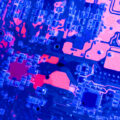NASA's aspiration to create a space plane may soon materialize as one company is resurrecting a long-abandoned NASA concept to construct a reusable space plane capable of ferrying people and small payloads to space affordably.
Reviving the Dream of a Space Plane
Back in the 1990s, NASA explored the idea of designing a space plane prototype known as X-33. Unfortunately, the project was shelved in 2001 due to technical challenges. Seattle-based Radian Aerospace is now on a mission to pick up where NASA left off by developing Radian One, a fully reusable space plane that can be utilized up to 100 times and has the capacity to transport up to five astronauts at once.
Livingston Holder, the former program manager of X-33 at NASA, now serves as the chief technology officer of Radian Aerospace and is leading the charge in this new endeavor.
Technological Advancements Pave the Way
Holder stated to CNN that significant advancements have taken place since 2001, making the concept of a space plane more feasible. He highlighted the improved composite materials that are lighter and more durable, along with enhanced propulsion systems that offer greater efficiency in propellant consumption and reduced system weight.
The Vision Behind Space Planes
The demand for launching objects into space, such as satellites crucial for activities like weather forecasting and GPS navigation, continues to rise. While rockets are currently the primary method for achieving this, they are deemed inefficient and costly by NASA.
Unlike traditional rockets that are discarded after a single use, space planes like Radian One could provide a more cost-effective and comfortable alternative for space travel. With reduced fuel requirements and no need for multiple rocket stages, space planes offer a promising solution.
Radian One's Innovative Approach
Radian One's design deviates from the vertical launch of rockets by utilizing a rocket-powered sled. This sled propels the plane along a two-mile rail, reaching speeds of 537 miles per hour before launching it into space. The plane then continues its journey using its onboard engines.
This unique approach not only minimizes the fuel load required for the space plane but also promises a smoother and more comfortable ascent for passengers. Radian aims to make space travel more accessible and affordable through this innovative method.
Shaping the Future of Space Travel
While Radian One may not replace all conventional rockets, it is poised to cater to smaller payloads, akin to a pickup truck in the realm of space transport. Traditional rockets will likely continue to serve heavier payloads, analogous to 18-wheelers.
Although a full-scale version of Radian One is projected to debut in 2028 without orbiting capabilities initially, its successful development could introduce a cost-effective option for a burgeoning sector of space exploration.
—————————————————————————————————————————————
By: abitter@businessinsider.com (Alex Bitter)
Title: NASA’s Ambition to Develop a Space Plane Reimagined by Radian Aerospace
Sourced From: www.businessinsider.com/radian-aerospace-to-test-space-plane-radian-one-model-this-year-2024-9
Published Date: Mon, 02 Sep 2024 23:06:50 +0000





Leave a Reply